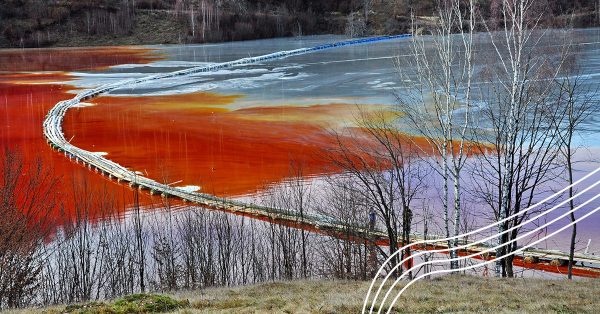In 2017, an oil spill in Malaysia’s southern state of Johor, caused by the collision of two container vessels, drifted into Singapore’s territorial waters and affected water quality at the beaches of Changi, Pasir Ris, and Punggol. With about 300 tonnes of oil spilt during the incident, sand on the beaches of northeastern Singapore were coated with a black tar-like substance while the surface of the sea had an oily sheen.
Oil spills devastate the marine environment. 1 Farmed aquaculture is especially affected by oil and chemical exposure within a contaminated habitat. Some farms reported huge losses of more than 250 kilogrammes of dead fish, and as local production comprised 9% of all fish consumed in the country, this was an incident that had a significant impact on the nation’s food security.
The affected region in Singapore was one that was teeming with underwater life. There had been many sightings of rare sea turtles, otters, and endangered migratory birds in this biodiversity-sensitive area. In an interview with The Straits Times, Mr. Stephen Beng, chairman of the Nature Society (Singapore)’s marine conservation group, highlighted the hazards of oil spills to marine wildlife and emphasised how “oil destroys the insulating ability of fur-bearing mammals like otters, and the water repellency of birds’ [feathers].” 2
Beyond the disastrous impact on Life Below Water (Sustainable Development Goal 14), mangrove areas were also negatively affected by the oil spill. Pulau Ubin, an island off the northeastern coast of Singapore, is home to about 20 per cent of all mangroves in Singapore. 3 These trees and shrubs breathe through pores in their trunks and stilt roots. Unfortunately, saplings, roots, and leaves of mangroves were later found to have been clogged with oil.
In coordination with the Maritime and Port Authority of Singapore, a huge clean up operation was mounted by Singapore’s National Parks Board and National Environment Agency. Contractors from various government agencies used oil absorbents in an attempt to mop up the oil spill. The sorbents appeared to look like large swathes of cotton wool, and when these sorbents were stained with oil, they were loaded onto a vessel and taken away. To decontaminate the beaches, workers also packed oil-stained sand into trash bags for disposal elsewhere. While a comprehensive remediation effort was made to skim oil from the surface of the water and prevent further spread of oil, the environment may take years to fully recover from this oil spill.
The Maritime and Port Authority of Singapore has published rates for anti-pollution services in the event of an oil spill. 4 It is a comprehensive and extensive circular, because oil spill clean ups involve tugs, hydrographic rafts, mooring vessels, skimmers, containment booms, suction tubes, spray dispersant systems, other specialised equipment, manpower, and administrative overheads. But oil spill remediation goes beyond mere dollars and cents. Singapore is a major maritime hub and has one of the busiest ports in the world. There will inevitably be risks to Singapore’s rich marine biodiversity should another oil spill happen, and it is thus of utmost importance that oil spill remediation efforts are conducted effectively, promptly, and in an environmentally sustainable manner. 5
Some of the current oil spill remediation techniques involve using toxic dispersants. 6 Unfortunately, this may even be more dangerous to the wider marine environment!
Clean Earth Technologies is currently evaluating a non-toxic oil spill remediation solution that can effectively clean up oil spills without a burdensome financial, social, and environmental cost. This porous, hydrophobic polysulfide can absorb oil to create a gel-like substance up to two to three times its own mass. The oil can then be mechanically separated from the polymer, allowing for it to be reused. This process will allow for oil recovery, reducing the financial cost of the clean up operation. 7
At Clean Earth Technologies, efforts are underway to commercialise this material for oil sorbent applications. We are also looking to collaborate with industry bodies and governmental agencies, which will allow our oil spill remediation solution to make a difference and create positive impact in communities affected by oil spills.
____________________________
[1] For more on the persistence of oil contamination in the marine environment after an oil spill, see, Paul F Kingston, “Long-Term Environmental Impact of Oil Spills,” Spill Science & Technology Bulletin 7, no. 1-2 (2002): pp. 53-61, https://doi.org/10.1016/s1353-2561(02)00051-8.
[2] Audrey Tan, “Big Cleanup of Singapore’s North-Eastern Coast after Oil Spill,” The Straits Times, January 5, 2017, https://www.straitstimes.com/singapore/environment/big-cleanup-of-n-e-coast-after-oil-spill.
[3] Ibid.
[4] See, “Oil Spill Response & Vessel Rates in Singapore,” (Maritime and Port Authority of Singapore, 2017), https://www.mpa.gov.sg/web/portal/home/port-of-singapore/circulars-and-notices/port-marine-circulars/detail/7f629b41-8aa9-4508-aa1b-7d4604d1f484.
[5] For more on the fragility of coastal regions to oil spills, see, Erich R. Gundlach and Miles O. Hayes, “Vulnerability of Coastal Environments to Oil Spill Impacts,” Marine Technology Society, 1978.
[6] Michael J. Hemmer, Mace G. Barron, and Richard M. Greene, “Comparative Toxicity of Eight Oil Dispersants, Louisiana Sweet Crude Oil (LSC), and Chemically Dispersed LSC to Two Aquatic Test Species,” Environmental Toxicology and Chemistry 30, no. 10 (2011): pp. 2244-2252, https://doi.org/10.1002/etc.619. For more on the advent of oil dispersant usage and advances in oil dispersant research and development, see also, R.r Lessard and G Demarco, “The Significance of Oil Spill Dispersants,” Spill Science & Technology Bulletin 6, no. 1 (2000): pp. 59-68, https://doi.org/10.1016/s1353-2561(99)00061-4.
[7] There are significant financial benefits that may incentivise the recovery of spilt oil over methods that disperse the oil. See, Daniel P. Prendergast and Philip M. Gschwend, “Assessing the Performance and Cost of Oil Spill Remediation Technologies,” Journal of Cleaner Production 78 (2014): pp. 233-242, https://doi.org/10.1016/j.jclepro.2014.04.054.



